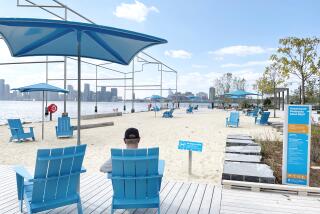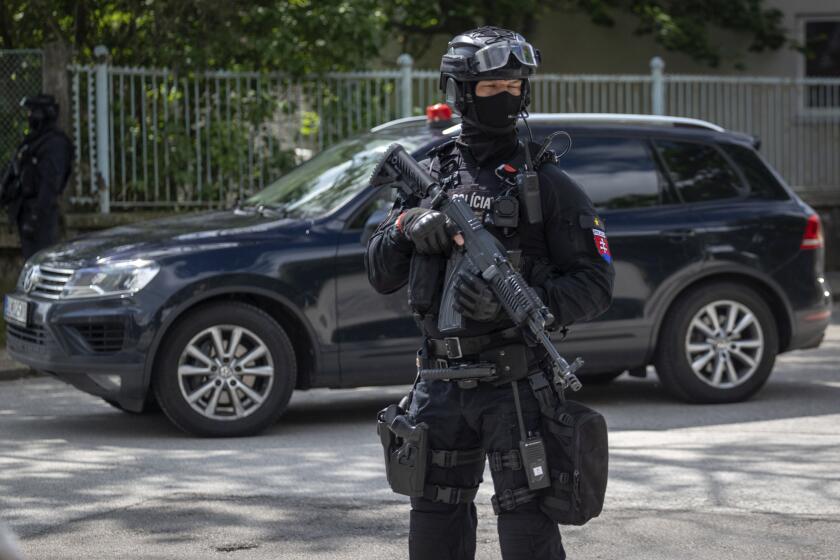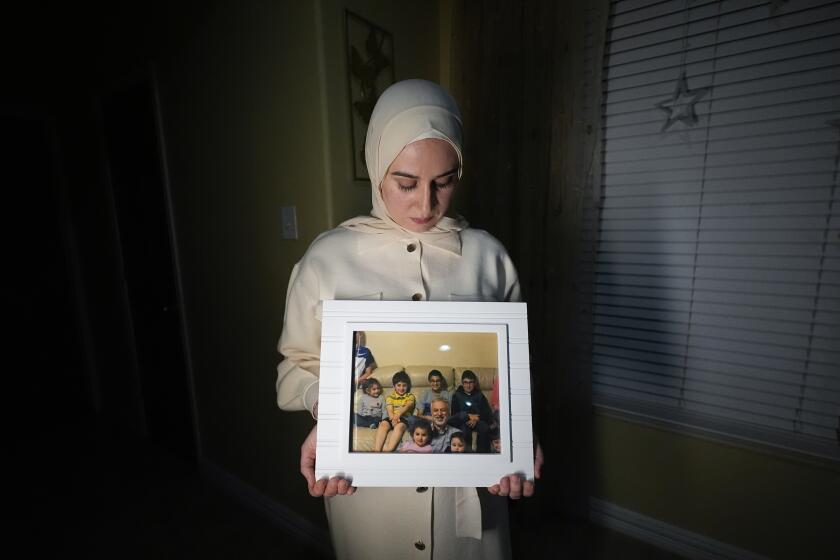Obama names Donovan point man for Sandy recovery, tours New York

In his second tour to the devastated Northeast following Hurricane Sandy, President Obama pledged Thursday he would see the recovery effort through and announced the appointment of Housing and Urban Development Secretary Shaun Donovan to coordinate federal resources to the states affected.
“We thought it’d be good to have a New Yorker be the point person,” Obama said in Staten Island, standing in front of a bulldozer and a boarded-up house cordoned off by yellow caution tape. “I have every confidence that Shaun’s going to be doing a great job.”
Before Donovan moved to HUD in 2009, the New York native served as commissioner of New York City’s Department of Housing Preservation and Development and implemented the city’s plan to build and preserve 165,000 affordable homes -- the largest such effort in U.S. history.
Obama spoke after a meeting with first-responders and Staten Island residents, thousands of whom are still without power.
“We’ve got some work to do and I want you to know I’m here to do it,” Obama told a crowd outside boarded up St. George Malankara Orthodox Church of India Inc.
He toured Staten Island streets, posed for pictures with residents -- most of whom were layered in thick winter coats and beanies and scarves -- and hugged families who lost their homes. The president chatted with locals while standing by what remained of their homes, one house partially missing its front, another a pile of rubble after it caved in on itself, according to pool reports.
The president was joined on his tour of New York’s devastated coastline by New York Sens. Charles E. Schumer and Kirsten Gillibrand, New York Gov. Andrew Cuomo and New York City Mayor Michael R. Bloomberg, along with Homeland Security Secretary Janet Napolitano and Donovan.
Dressed in a navy blue coat, khakis and running shoes, Obama began his tour about 8:30 a.m. East Coast time.
The president flew over Far Rockaway and Breezy Point -- where more than 100 homes burned in one night as floodwaters kept firefighters at bay -- and Staten Island.
After Sandy, in the days leading up to his reelection, Obama visited the New Jersey coastline with Gov. Chris Christie. The leaders comforted residents who saw their homes washed away by Sandy’s massive storm surge and thanked emergency teams providing hot meals and shelter for the thousands who have been displaced.
The federal emergency agency is working with states in the region to find homes for thousands who have applied for assistance. New Jersey may reopen a closed military base and FEMA has begun sending in mobile homes for temporary housing.
Obama’s tour in New Jersey just days before the Nov. 6 election became political fodder, with some Republicans criticizing Christie for heaping praise on the federal government’s response to the disaster, which is expected to cost as much as $50 billion.
Though most communities have had utilities turned back on, homes in New York and New Jersey’s hardest hit areas suffered damage beyond basic repairs. Crews have to go door to door to tens of thousands of homes in New Jersey’s Long Beach community and New York’s Long Island to inspect and replace equipment before their power can be turned back on.
Cuomo estimated recovery costs and economic losses to New York at $33 billion and asked that FEMA cover 100% of the costs.
White House press secretary Jay Carney said the government could not offer a specific response to the request because the White House has not received details from the state. He said the government would continue to do everything it could to cut through the bureaucracy to help the Northeast rebuild.
Cuomo and Bloomberg attribute the wave of storms that have hit the Northeast over the last two years -- at least three significant events -- to climate change. Bloomberg endorsed Obama ahead of the election and said the president would offer the best options for combating climate change.
Sandy killed almost 200 people in the U.S. and overseas as it coursed through the Caribbean then veered north to strike the U.S. Northeast and Canada before it finally dissipated over the Atlantic Ocean.
ALSO:
Deadly Indianapolis house blast ruined 31 homes, officials say
BP guilty of criminal misconduct, negligence in gulf oil spill
FBI adds Alabama native to most wanted terrorists list
More to Read
Start your day right
Sign up for Essential California for news, features and recommendations from the L.A. Times and beyond in your inbox six days a week.
You may occasionally receive promotional content from the Los Angeles Times.







